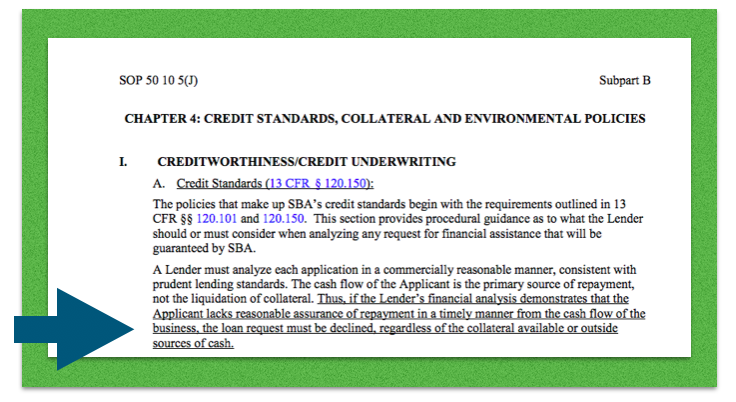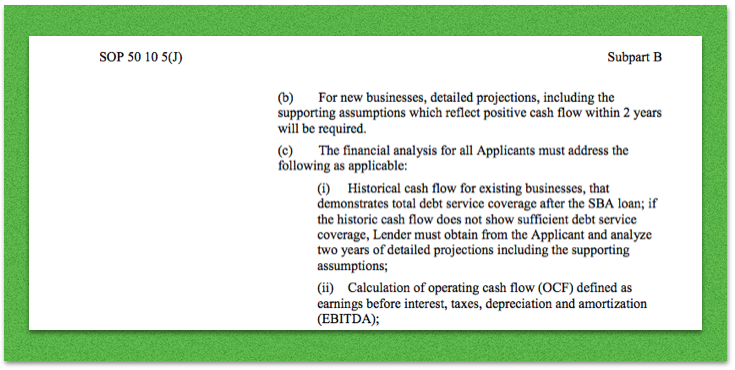Believe it or not, the Small Business Administration’s Standard Operating Procedures already have rules in place that would prevent much of the mass franchise fraud that is harming taxpayers.
But SBA lenders aren’t following the rules… and the SBA isn’t doing anything to stop lenders from continuing their role in perpetuating the fraud.
Yes, it would be incredible for franchiSEES if the FTC would come on board to enforce their own franchise rule and end the endemic fraud, but the SBA’s own Standard Operating Procedures should already be enough to shut a lot of it down. Many fraud victims have received SBA loans that should have been denied because the franchiSOR shouldn’t have qualified.
The new SBA Franchise Loan Transparency Act, if passed, would ensure that the franchiSEES get the information they need to recognize the fraud before they sign documents that will ultimately mean they lose everything. That’s a no-brainer. The franchiSEE is the party taking the risk. The franchiSORS are incentivized for the bad loans to go through because they get risk-free expansion and lots of money in franchise fees. The lenders are incentivized for the bad loans to go through because they make money when they write and sell loans.
The franchiSORS and the banks are in cahoots writing bad SBA loans that mean the franchiSEES lose everything.
And, the lenders are breaking SBA rules when they do it.
But the SBA is ignoring their own rules, the franchiSEES are signing the loan documents, taking all the risk for the franchiSORS whose businesses shouldn’t qualify for the loans anyway, and are simultaneously signing franchise agreements with personal guarantees and commitments to pay future royalties regardless of what happens with their business. For these fraud victims, signing the loan paperwork and the franchise agreements means losing everything.
So let’s get specific. Exactly what do the SBA Standard Operating Procedures say that ought to prevent the SBA-related franchise fraud, and exactly where does it say them?
The SBA Standard Operating Procedure’s chapter about credit standards and collateral begins with an underlined statement that in and of itself should prevent the SBA’s involvement in franchise fraud. No doubt the underline was included for emphasis.
The report clearly states that a lender should not make a loan if repayment from the CASH FLOW of the business is not reasonably assured. It reads, “If the Lender’s financial analysis demonstrates that the Applicant lacks reasonable assurance of repayment in a timely manner from the cash flow of the business, the loan request must be declined, regardless of the collateral available or outside sources of cash” (emphasis added).
Then, the SBA Standard Operating Procedures go on to define what lenders are required to consider in their required financial analysis.
According to (b), “detailed projections, including the supporting assumptions which reflect positive cash flow within 2 years will be required.”
So, technically, in order for a franchiSEE to receive an SBA loan, a detailed pro forma, including projections of cash flow, must be provided to the SBA lender. AND, that pro forma must indicate that positive cash flow will be achieved within two years.
Importantly, SBA lenders are also already required to look at “historical cash flow for existing businesses.” In the franchise world, that should be easy. Historical cash flow from other franchisees is readily available in any franchised system. Plenty of data is available about franchised outlets that have struggled and failed in the past.
And significantly, in the franchise world, franchiSORS have a common habit of working with the same lenders repetitively. FranchiSORS have a common habit of referring their new franchiSEES to lenders who have already written loans for their franchise system. The franchiSORS and the lenders have a business relationship. Often, the lenders who are writing loans for new franchiSEES in any one franchise system are the same lenders who wrote loans for previous franchiSEES in the system.
And guess what that means? That means that the lenders writing the franchise loans should already have access to the historical cash flow data from the loans they’ve written in the past. If they’re following the rules, much of the information they need to know should already be in their files! It was required of them when they wrote previous loans for the same franchiSOR. The loan ought to be denied.
The lenders know about historical franchiSEES’ cash flow before they write the new loans.
But the franchiSEES don’t know. They’re kept in the dark. They take all the risk because they trust the SBA, they trust that the franchise is on the SBA Franchise Directory because it legitimately checks out. They trust that the FTC Franchise Rule protects them when the reality is that they don’t even have a private right of action.
According to the SBA rules, the historical cash flow data must show “sufficient debt service coverage.” And, if it doesn’t, the loan shouldn’t be written.
In case you don’t know (I didn’t) Debt Service (DS) is the future required principal and interest payments on all business debt. You know, all that money you owe every month when you have to pay off loans. In this context, it refers to all the money a franchiSEE must pay on all the business loans the franchiSEE takes out to open a new outlet for the franchiSOR.
Supposedly, according to the SBA Standard Operating Procedures, in order for a lender to write the loan, the franchiSEE must have a “Debt Service Coverage Ratio equal to or greater than 1.15 on a historical and/or projected cash flow basis and 1:1 on a global basis. To perform a complete analysis of debt service, it is important for a Lender to obtain a current debt schedule prepared by the Applicant, including any shareholder debt.”
So… the lender must know everything about the new FranchiSEES’ debt and must have documents in hand that demonstrate that the other franchiSEES in the same system have historically brought in enough revenue to reasonably cover the new franchiSEES’ SBA loan payments.
But that’s not what’s happening. The lenders are “backing into the loans,” choosing unreasonable numbers that aren’t supported by historical revenue data from other franchiSEES, and convincing franchiSEES that that the loans meet SBA standards when they don’t.
I’ve talked to franchiSEES who have been defrauded in this way. Their new business had no chance of bringing in the money the pro forma projections claimed it would and the lenders should have had the documents in hand (even if the franchiSEES themselves weren’t allowed them) that proved that the loan didn’t meat SBA standards.
If the historical information the lenders should already have demonstrates that other franchiSEES aren’t succeeding in the franchiSORS’ system, the loans shouldn’t be written. The lenders are part of the fraud and the SBA isn’t stopping them.
The loans are being written — even when other franchiSEES’ numbers don’t justify them.
And lenders not having sufficient historical records is no excuse. Even if the same lenders weren’t writing several loans for the same franchises, and didn’t already have the information they need to know, they’re required by the SBA to get the information.
Yep, you’ve got it, “b) The Borrower and/or OC* will maintain proper books and records, allow Lender and SBA access to these records, and furnish financial statements or reports annually or whenever requested by Lender.”
The lenders are part of the fraud.
* I’m not sure what OC stands for. I looked back through the document and I couldn’t find the answer. I’m doubtful that it really matters, but if I ever figure it out, I’ll come revise this post and add the information. If you know what OC stands for, please contact me and let me know!






